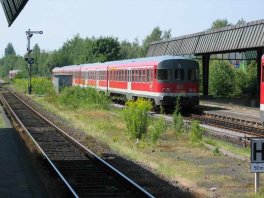With the news that several high speed European rail companies are forming a partnership to integrate routes and ticketing, under the name of Railteam, my first thought was to wonder if the fun was going from travelling by train. Obviously, this partnership is good news; any way to avoid flying is a good thing, and it’s very true that trying to buy tickets for multiple routes in Europe is an exercise in frustration.
I find high-speed trains to be quite sterile, however. The interiors aren’t much different from those inside aeroplanes, the windows tend to be small and much of the time, they travel through cuttings that block out the scenery. Compare this to the slower Eurocity trains, that travel long distances between capitals, without any intention of breaking land-speed records. The mix of travellers aboard is far greater than their high-speed counterparts, you get time to see the countryside that you’re passing through, and much of the time, they’re more comfortable.
Taking that concept even further, I’ve often deliberately travelled over reasonably long distances using only slower regional express trains. Obviously, you don’t get far fast, but it gives you a much better feel for the places you’re travelling through, and you can meet the locals.
Travelling this way gives you the freedom to jump on and off the train whenever you feel like it, and it forces you to be flexible; it’s hard to book accomodation ahead of time if you don’t necessarily known where you’ll be at the end of the day. Furthermore, it’s relaxing. You’re not rushing anywhere, you’re just having a leisurely journey across a region. It’s certainly one good way to combat travel fatigue.
It helps to be prepared, however. If you’re planning on doing this, I’d recommend carrying one of the Thomas Cook rail timetable books; even just for the route maps, they’re invaluable. There’s nothing worse than getting stuck in a small town and finding there’s no train out until the next day!
Links
European High Speed Operators launch Railteam – Raileurope blog


Recent Comments